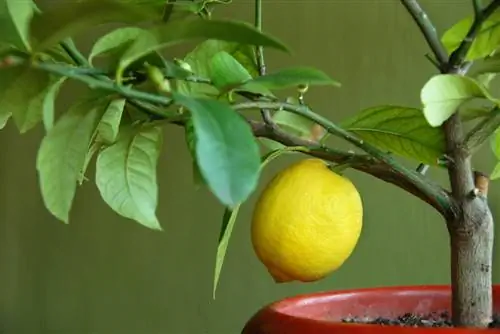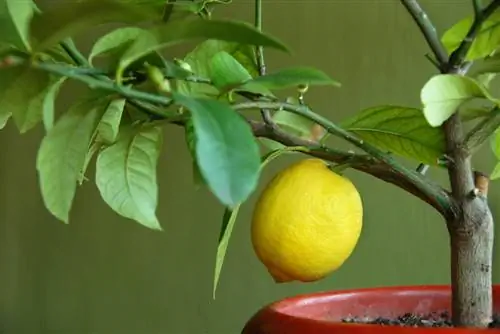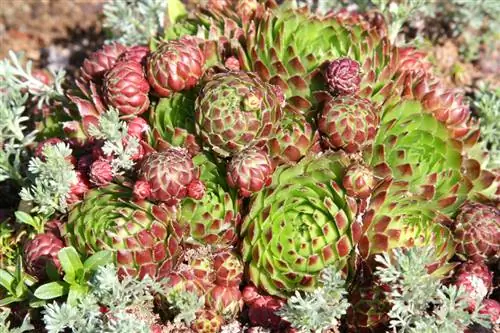- Author admin [email protected].
- Public 2023-12-16 16:46.
- Last modified 2025-01-23 11:22.
Whether on the terrace, balcony or winter garden: the lemon tree is undisputedly one of the most popular plants for these areas. In the following article we would like to introduce you to the citrus plant in more detail and give you valuable planting and care tips.

What is a lemon tree profile?
The lemon tree (Citrus limon) is an upright growing small tree with a height of 4-5 meters. It belongs to the rue family and blooms from May to August. Lemon trees are considered valuable natural remedies and are ideal for terraces, balconies or winter gardens.
Plant profile:
Systematics
- Botanical name: Citrus limon
- Order: Sapindales
- Family: Rutaceae
- Genus: Citrus plants (Citrus)
Botanical:
- Growth: Upright, bushy growing small tree
- Growth height: 4 to 5 meters, correspondingly smaller in the pot
- Main flowering period: May to August
- Flower: Intensely scented individual flowers
- Flower color: white
- Leaves: Serrated, elongated, pointed oval, juicy green
- Fruits: Edible yellow berries
Special features:
Lemons are considered valuable natural remedies because of their high vitamin content. Their essential oils also have a soothing effect on insect bites.
Origin
The lemon tree originally comes from Asia, where the plant has been cultivated for over a thousand years. It is believed that the lemon tree originated from a cross between the citron and the bitter orange tree.
Location and substrate
Give the heat-loving plant a bright, sunny and protected place. A south-facing terrace or a temperate winter garden is ideal. If you would like to integrate the lemon tree into a bed as a highlight, you should bury the plant together with the bucket after the ice saints and bring it back into the house in autumn.
The lemon tree is a little special when it comes to the substrate. It is therefore preferable to place it in citrus soil or high-quality pot plant soil without adding peat.
Watering and fertilizing
Water the lemon tree rarely, but then thoroughly. Before watering, do a thumb test: If the top three centimeters of soil feel dry, it's time to reach for the watering can. Citrus trees have a high calcium requirement. For this reason, use hard water. Since waterlogging causes the leaves to fall off, you should tip away any liquid that collects in the saucer after a few minutes.
Everything is fertilized for two weeks from spring to budding. A special fertilizer for citrus plants that contains a lot of nitrogen and little phosphate is ideal.
Repotting
If the planter has become too small, give the citrus tree a new pot, preferably in spring. It is important that a dense root ball can form. Therefore, choose a container that is no more than five centimeters larger than the previous one.
Older specimens are no longer placed in a new bucket, but only the substrate is replaced. To do this, carefully remove the soil with a small garden shovel until you come across the first, thick roots. Then fill the pot with fresh citrus soil.
Diseases and pests
Lemon trees are unfortunately a bit sensitive. They are often used by
- Aphids,
- Spider mites,
- Scale insects
haunted. You can combat these successfully using commercially available means.
If the leaves turn yellow, the plant is suffering from chlorosis. Over-fertilization can also be the cause of the unsightly leaf color. In this case, check the fertilizer doses and preferably supply the lemon tree with special fertilizer in the dosage stated on the packaging.
Tip
Lemon trees do not form a beautiful crown on their own. That's why they need to be cut regularly. If the tree has a nice shape, only the shoots that have become too long or are annoying should be cut out in the spring.






